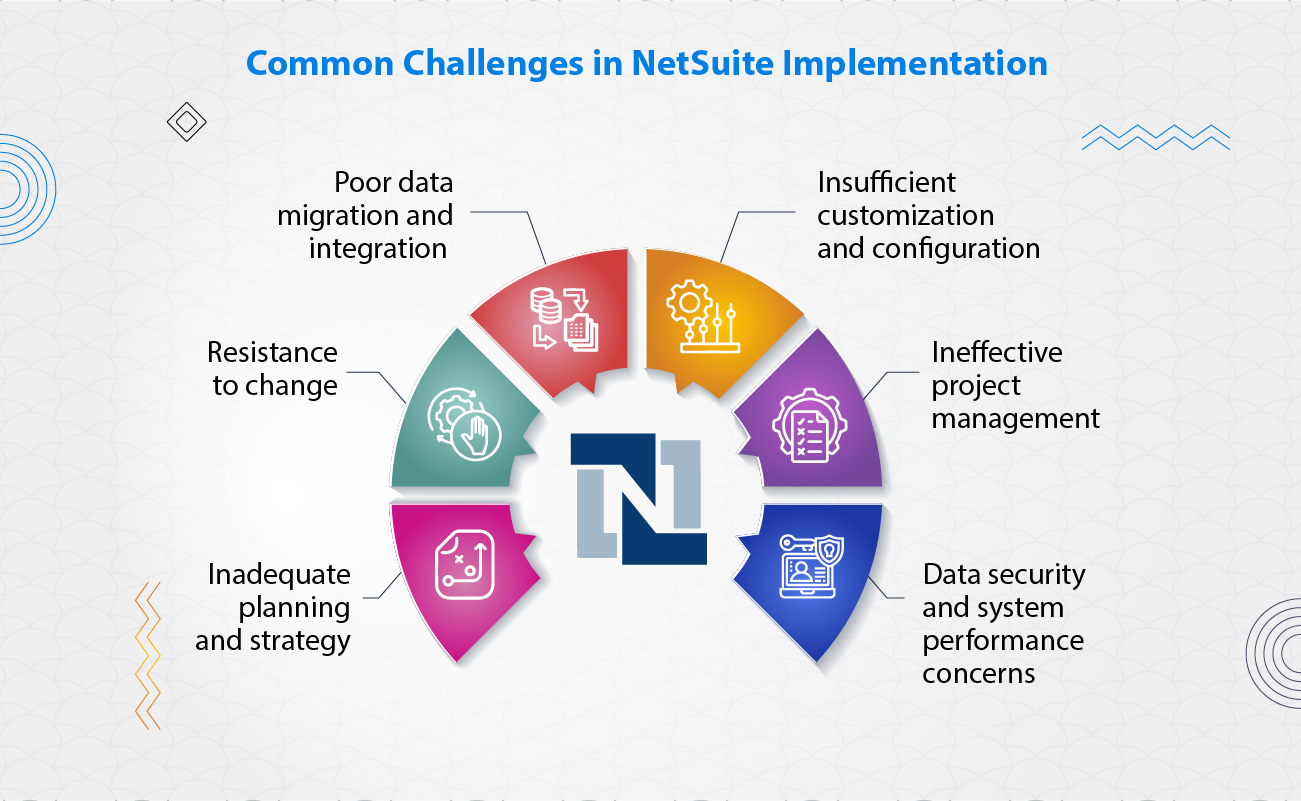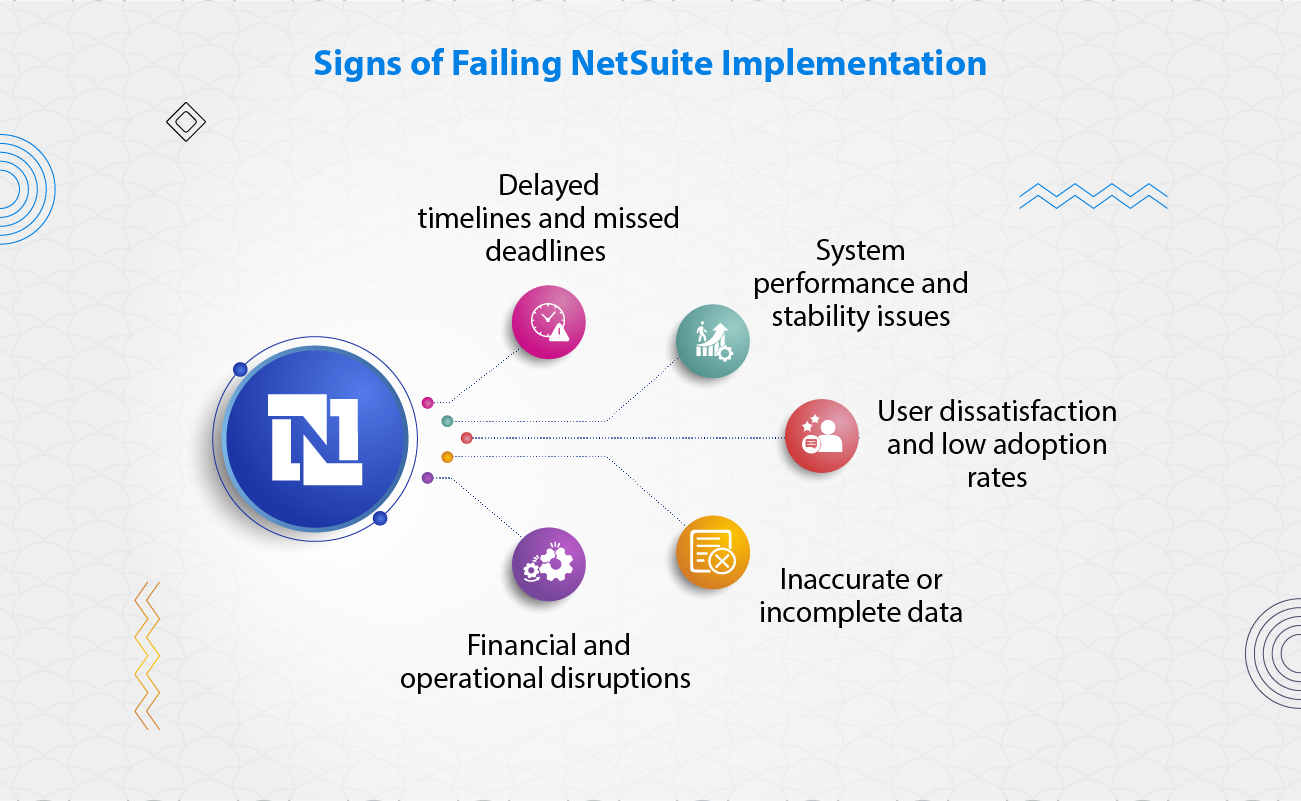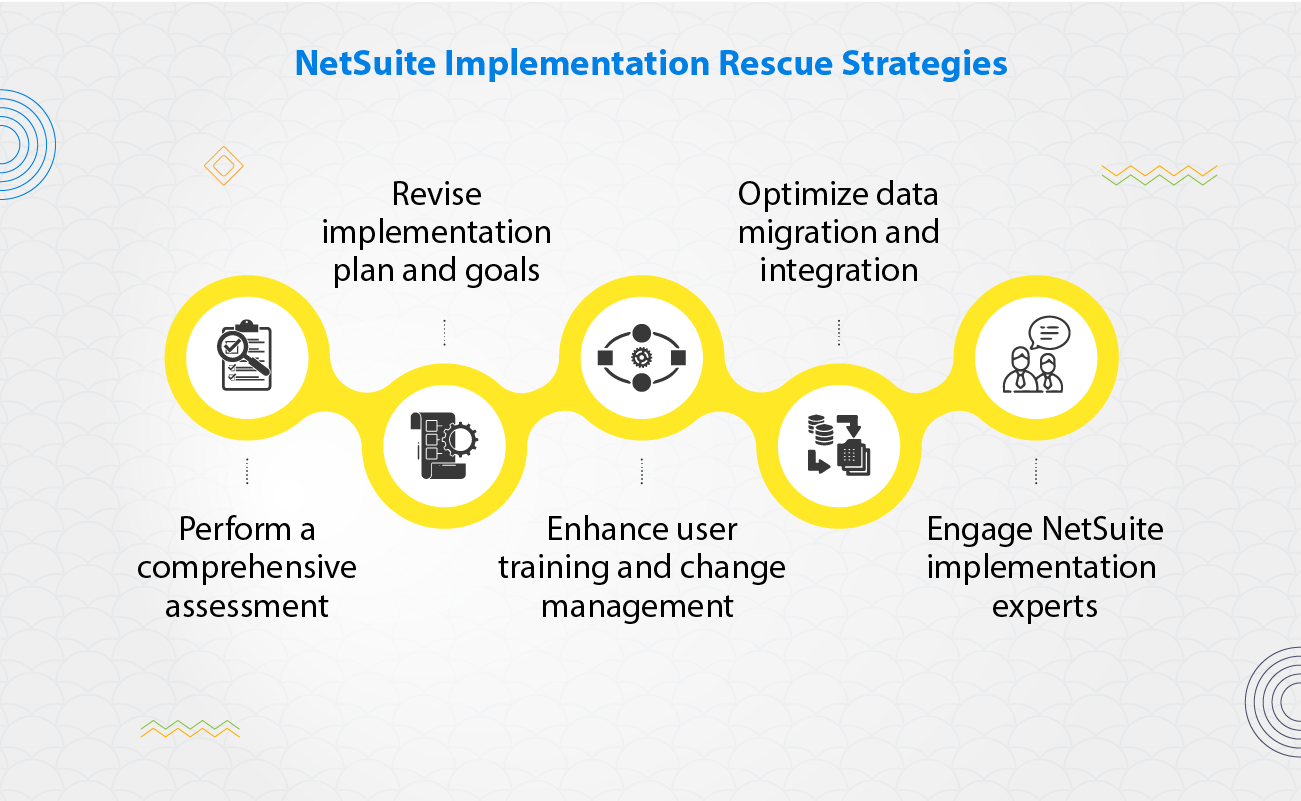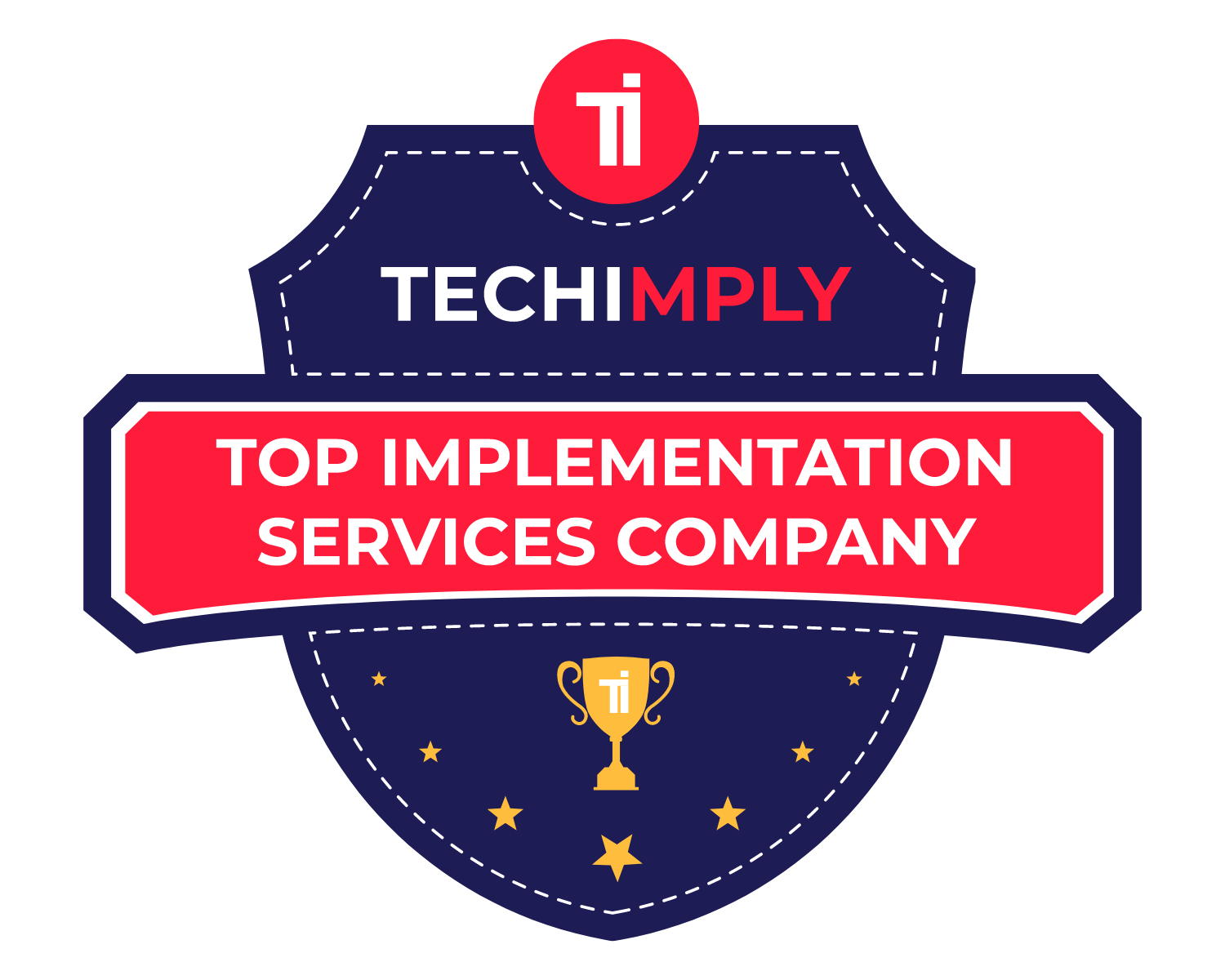Implementing NetSuite, a comprehensive cloud-based ERP solution, can bring significant benefits to organizations, such as improved operational efficiency, streamlined processes, and better decision-making capabilities. However, if the implementation is not done correctly, it can cause a drastic issue for your business, so it is important to rescue it.
This article provides an overview of NetSuite implementation, highlighting its importance in driving business growth and efficiency. It also sheds light on the inherent challenges and risks in the implementation process, underscoring the need for proper planning and execution to mitigate potential pitfalls and ensure a successful outcome.
NetSuite Implementation Challenges

Implementing NetSuite can present organizations with various challenges that need to be addressed to ensure a successful implementation. These challenges can lead to delayed timelines, system performance issues, inaccurate data, user dissatisfaction, and operational disruptions. Organizations must recognize and understand these challenges to effectively mitigate them.
Addressing these challenges through comprehensive assessments, revised implementation plans, enhanced user training and change management, optimized data migration and integration, and engagement with NetSuite Implementation experts, organizations can overcome obstacles and achieve a successful NetSuite implementation.
Signs Of Failing NetSuite Implementation

Despite careful planning and execution, NetSuite implementations can sometimes encounter difficulties that indicate failure. Recognizing these signs early on is crucial for taking corrective actions and ensuring a successful outcome. Here are some common signs of a failing NetSuite implementation:
Delayed Timelines And Missed Deadlines
It may indicate underlying issues if the implementation project consistently falls behind schedule and needs to catch up on crucial deadlines. Delays can occur due to poor project management, scope creep, inadequate resource allocation, or unexpected technical challenges. Timely monitoring of project progress and addressing any delays promptly is essential to keep the implementation on track.
System Performance And Stability Issues
A failing NetSuite implementation can manifest through system performance issues, such as slow response times, frequent system crashes, or data errors. These issues can disrupt daily operations, hamper productivity, and erode user confidence in the new system. Monitoring system performance, conducting regular testing, and addressing performance issues promptly is essential to maintain a stable and efficient implementation.
Inaccurate Or Incomplete Data
Data consistency or complete data in NetSuite can significantly impact business operations. If users encounter missing or incorrect data, it can lead to errors in reporting, hinder decision-making, and compromise data integrity. Regular data validation and verification during the implementation process and ongoing data quality management are crucial to ensure accurate and complete data within NetSuite.
User Dissatisfaction And Low Adoption Rates
A failing implementation often leads to user dissatisfaction and low user adoption rates. If users find the system challenging to use, experience frequent errors, or perceive that the new system needs to meet their needs, they may resist using it. User feedback and engagement are vital to identifying and addressing usability issues through additional training, system enhancements, or user support.
Financial And Operational Disruptions
A failing NetSuite implementation can result in financial and operational disruptions. Organizations may need help with financial processes, inventory management, order fulfilment, or other critical business operations. These disruptions can have significant financial implications, impact customer satisfaction, and erode organizational credibility. Identifying and addressing operational disruptions is crucial to minimize their impact on the business.
NetSuite Implementation Rescue Strategies

The following strategies can help organizations overcome implementation hurdles and salvage their NetSuite implementation:
Perform A Comprehensive Assessment
Identify underlying issues and bottlenecks: Conduct a thorough evaluation of the implementation project to identify the root causes of the challenges. This assessment should include NetSuite implementation methodologies, examining project management practices, system configuration, data migration processes, user training, and change management strategies.
Evaluate current system configuration and customization: Assess the system configuration and customization to ensure they align with the organization’s requirements. Identify areas where modifications or enhancements are needed to improve system performance and functionality.
Review data migration and integration processes: Evaluate the data migration and integration processes to identify any gaps or issues impacting data accuracy or completeness. Verify that data mapping is accurate and that all relevant data has been migrated successfully.
Revise The Implementation Plan And Goals
Clearly define project scope and objectives: Review and redefine the scope and objectives based on the assessment findings. Ensure the scope is well-defined and achievable and focuses on the critical business processes that will deliver the most significant value while customizing the NetSuite Implementation.
Establish realistic timelines and milestones: Set realistic timelines and milestones considering the complexities and challenges encountered during the implementation. Communication with stakeholders about revised timelines and managing expectations is vital to regain confidence and support for the project.
Prioritize critical business processes for implementation: Identify the critical business processes that need immediate attention and prioritize them during the NetSuite Implementation rescue phase. By focusing on the essential processes, organizations can achieve quick wins and demonstrate the value of the NetSuite system to stakeholders and users.
Enhance User Training And Change Management
Develop tailored training programs for different user groups: Assess the training needs of different user groups and develop tailored training programs that address their specific requirements. Provide comprehensive training sessions, including hands-on exercises and real-world scenarios, to ensure that users are proficient in utilizing the NetSuite system.
Address user concerns and provide ongoing support: Address the concerns and feedback of the users regarding the system to avoid mistakes in NetSuite implementation. Provide a dedicated support channel where users can seek assistance and guidance. Promptly address user issues and provide timely resolutions to foster user satisfaction and improve system adoption.
Promote the benefits of NetSuite adoption: Communicate the benefits of using NetSuite to all stakeholders and users. Highlight how the system enhances efficiency, improves decision-making, and drives business growth. Sharing success stories and examples of how NetSuite has benefited other organizations can help create a positive mindset and increase user buy-in.
Optimize Data Migration And Integration
Ensure data accuracy and completeness: Validate and reconcile the data within the NetSuite system to ensure accuracy and completeness. One of the key features of the NetSuite implementation best practices includes data quality and accuracy management. Regularly monitor data integrity and perform data audits to maintain high-quality data within the system.
Identify and resolve data mapping issues: Analyze and resolve any data mapping issues between NetSuite and other systems. Ensure that data is mapped correctly and consistently across different modules and integrations. Collaborate with data integration experts to streamline the data mapping process and optimize data flows.
Streamline integration with other systems: Review the integration points between NetSuite and other systems to identify areas for improvement. Streamline integration processes to ensure seamless data exchange and avoid any data inconsistencies or duplication. Implement robust integration strategies and leverage integration tools or middleware to enhance system interoperability.
Engage With NetSuite Implementation Experts
Collaborate with experienced consultants or partners: Seek the assistance of NetSuite implementation professionals who have extensive experience and knowledge. Their insights can help overcome implementation challenges and ensure the successful adoption of NetSuite.
Leverage their expertise to overcome implementation challenges: Hire NetSuite implementation partners to address the identified challenges and implement effective solutions. Leverage their expertise in system configuration, customization, data migration, and change management to navigate the complexities of the implementation process.
Seek guidance for system customization and configuration: Leverage the expertise and industry experience of professionals specializing in NetSuite Implementation services to enhance system customization and configuration for optimal results. They can provide insights on industry-specific requirements, best practices, and advanced functionalities that align with the organization’s needs. Collaborative customization efforts can ensure that NetSuite is tailored to meet unique business requirements effectively.

Wrapping Up!
A successful NetSuite implementation is crucial for organizations to unlock the full potential of the cloud-based ERP solution. However, challenges and setbacks can occur along the way. Organizations can overcome obstacles and achieve their goals by recognizing the signs of a failing implementation and implementing the appropriate NetSuite implementation rescue strategies.
From comprehensive assessments to tailored training programs, data migration and integration optimization, organizations can rescue their NetSuite implementations and pave the way for increased operational efficiency, improved decision-making, and sustainable business growth. Proactive intervention and strategic planning are key to turning a failing implementation into a successful one.
















